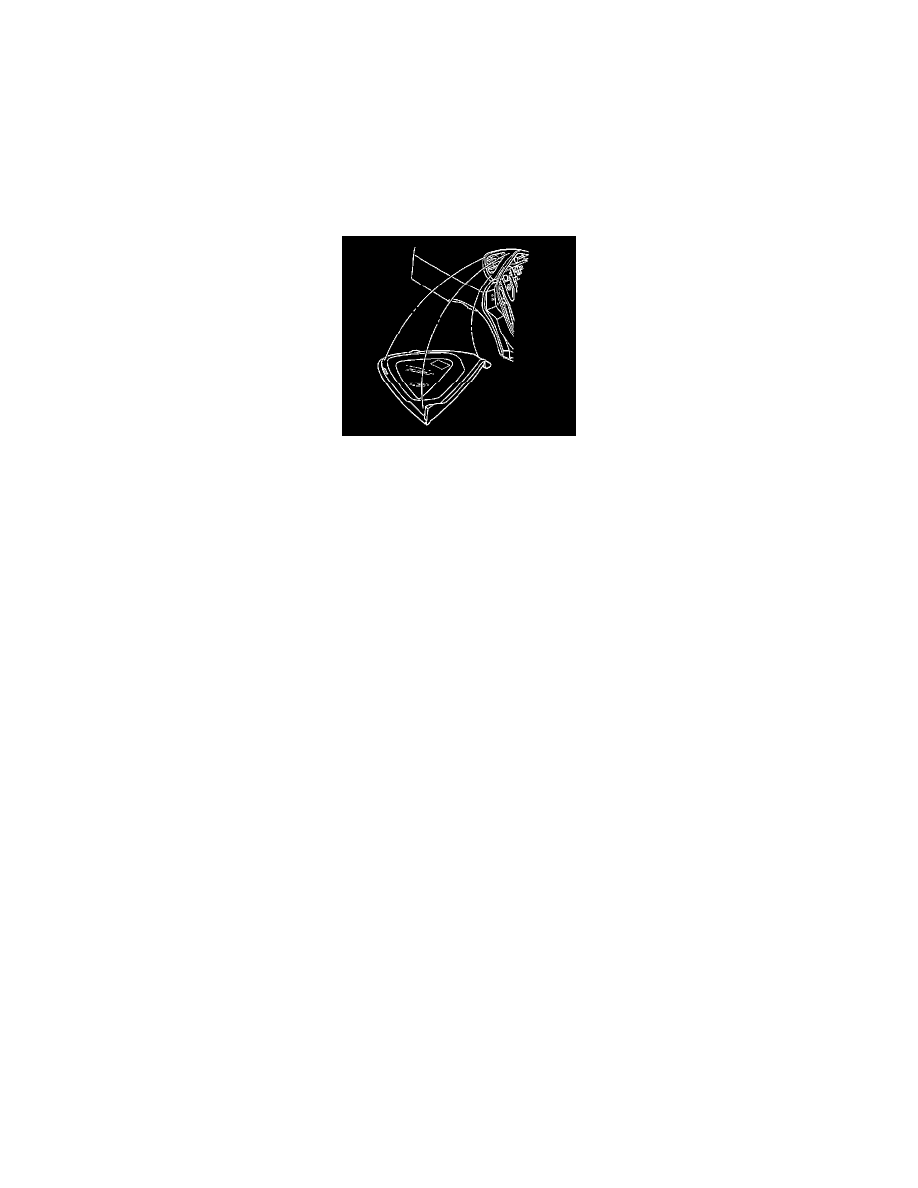Impala V6-3.4L VIN E (2000)

must be refinished in order to restore the bonding area strength. If paint repairs are required, mask the flange bonding area prior to applying the
color coat in order to provide a clean primer only surface. Materials such as BASF DE17(R), DuPont 2610(R), Sherwin-Williams PSE 4600 and
NP70 (R) and Martin-Semour 5120 and 5130 (R) products are approved for this application.
3. After repairing the open as indicated, perform the following steps:
4. Inspect the condition of the stationary window opening and the adhesives bead to determine which installation method should be used. Refer to
Short Method Description (See: Description and Operation/Short Method Description) short method or Extended Method Description (See:
Description and Operation/Extended Method Description) extended method for guidelines.
5. Remove no more of the urethane adhesive than necessary in order to maintain the original shape. This will ensure the proper clearance between the
stationary window and the pinchweld flange.
6. After repairing the opening as indicated, shake the pinchweld primer (black #3) for at least one minute.
Caution: Failure to prep the area prior to the application of primer may cause insufficient bonding of urethane adhesive. Insufficient bonding of
urethane adhesive may allow unrestrained occupants to be ejected from the vehicle resulting in personal injury.
7. Use a new dauber to apply the pinchweld primed (black #3) to the surface of the bonding area.
8. Allow the primer to dry for approximately 10 minutes, Ensure that all nicks and scratches are covered.
9. With the aid of an assistant install the stationary window into the opening.
10. Use masking tape in order to mark the location of the stationary window in the opening.
11. Slit the masking tape at the top edge of the stationary window.
12. With the aid of an assistant remove the stationary window from the opening.
13. Place the stationary window inside up on a clean, protected surface.
Important: Do not remove all traces of the adhesive. Remove all mounds or loose pieces of urethane adhesive.
14. If the extended method is being used remove all but approximately 2 mm (3/64 in) of the existing bead of adhesive from the pinchweld flange.
15. Clean around the edge of the inside surface of the stationary window with a 50/50 mixture of isopropyl alcohol and water by volume on a
dampened lint free cloth.
Important: Do not apply the (black #3) primer to the existing bead of the urethane adhesive. Apply the primer only to nicks, scratches or
the primed surfaces.
16. Shake the pinchweld primer (black #3) for at least one minute.
17. Use a new dauber to apply the primer to the surface of the pinchweld flange.
18. Allow the glass primer to dry for approximately 10 minutes.
Important: Use care when applying the prep (clear #1) to stationary window. This primer dries almost instantly and may stain the
viewing area of the stationary window if not applied evenly.
19. If installing a new encapsulated stationary window, use a new dauber, in order to apply the stationary window prep (clear #2) to the area
approximately 10 mm to 16 mm (3/8 in to 5/8 in) around the entire perimeter of the glass inner surface of the primer/bonding areas). The primer is
good up to 8 hours after applying it to the glass. The primed surface of the glass must be kept clean.
20. Allow the glass primer to dry for approximately 10 minutes.
